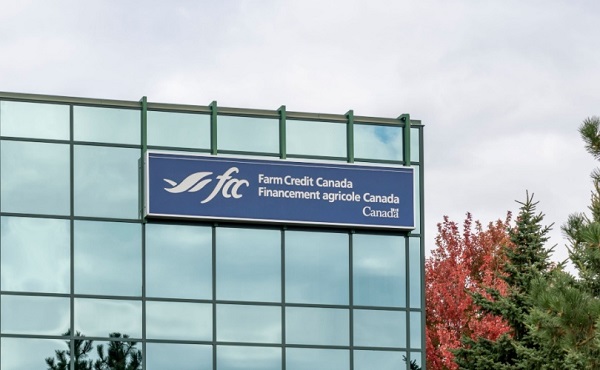International
‘Fingers Being Pointed’: Secret Service’s Explanations For Security Failures Ahead Of Trump Assassination Attempt Aren’t Adding Up
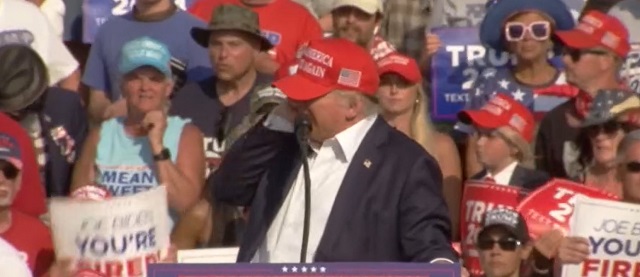
 From the Daily Caller News Foundation
From the Daily Caller News Foundation
Secret Service’s explanations for the security failures surrounding the assassination attempt against former President Donald Trump at a rally on Saturday aren’t adding up, according to security experts and former Secret Service agents.
Emerging details highlight what seems to be a disconnect between local officials and Secret Service, while making it more apparent that there were major oversights. Many key questions hinge on the responsibilities delegated to local police, who U.S. Secret Service Director Kimberly Cheatle confirmed during a Monday interview with ABC News were inside the building the shooter fired from, though nobody was stationed on the rooftop.
Cheatle explained a decision was made not to put anybody on top of the building because the “sloped” roof made it unsafe, but security experts and former Secret Service agents who spoke with the Daily Caller News Foundation emphasized not having someone on the roof was a “big failure” and didn’t believe Cheatle’s explanation was sufficient.
“Let’s just say the local law enforcement officers [and] the Secret Service agree that it’s just not safe to keep someone up there for a couple of hours,” former Secret Service agent Anthony Cangelosi told the DCNF. “Then the question is, well, how do we maintain its integrity otherwise? It’s not like you just throw your hands up and say ‘can’t do that.’”
Cangelosi said there is no “justifiable reason” for failing to cover the roof, suggesting they should have found solutions like putting another platform up or getting an officer on a lift.
Peter Yachmetz, retired FBI agent and principal security consultant at Yachmetz Consulting Group, pointed out that the shooter was moving around on the “unsafe” roof prior to the incident.
“The slope didn’t affect him,” Yachmetz told the DCNF.
JUST IN: USSS director Kim Cheatle says sn*pers weren't on the roof where Thomas Crooks shot from because it was "sloped" and unsafe.
Ironically, the sn*pers who were behind Trump during the rally were on a sloped roof.
"That building in particular has a sloped roof at its… pic.twitter.com/Vg36tXr9rJ
— Collin Rugg (@CollinRugg) July 16, 2024
Law enforcement reportedly spotted the shooter on the roof 30 minutes before shots were fired, WPXI reported Monday. After the incident, a witness described watching a man climbing onto the roof and trying to warn a police officer, claiming officials responded with confusion.
“The reality is, regardless of the spin, that particular roof should have been under constant surveillance and or posted,” former secret service agent Tim Miller told the DCNF.
Here's video of the 20-year-old gunman, on the roof in a prone position, opening fire at the Donald Trump rally in Butler, PA.
Shots ring out and panic ensues before the shooter is himself shot and killed seconds later.
Video acquired by TMZ.
More: https://t.co/72O4XtmVwA pic.twitter.com/t6M8a09fbK— michael j. babcock (@mikejbabcock) July 14, 2024
“In this particular instance, we did share support for that particular site and that the Secret Service was responsible for the inner perimeter,” Cheatle told ABC News Monday during an interview. “And then we sought assistance from our local counterparts for the outer perimeter. There was local police in that building — there was local police in the area that were responsible for the outer perimeter of the building.”
However, a local law enforcement official told The New York Times Tuesday that the local forces were in an adjacent building, not the one the shooter was firing from.
The discrepancies in their accounts only add to the uncertainties surrounding who was responsible.
CBS News reported Monday that there were three snipers stationed inside the building shooter Thomas Matthew Crooks fired from, citing a local law enforcement officer. One of the snipers saw Crooks looking through a rangefinder in the minutes before he fired and radioed command post, according to CBS News.
The Butler Township Police Department declined to confirm the report to the DCNF, stating that there is an ongoing investigation by the FBI.
Butler County Sheriff Michael Slupe declined to offer additional comments Tuesday, telling the DCNF he is “backing away from media requests for comment and opinions.”
“There are too many questions being posed that I do not have first hand knowledge of and too many fingers being pointed,” he said. “I am in charge of the Deputy Sheriffs and no other law enforcement agency. My Deputies performed their duties at their assigned areas and went above and beyond after the shooting started and ended in the their actions to help people and assist police in clearing the nearby buildings.”
Slupe previously confirmed to CNN that an armed Butler Township officer encountered Crooks before he shot at Trump, but retreated down the ladder after Crooks pointed his gun at him. He told KDKA-TV there was a security failure, but noted “there is not just one entity responsible.”
“The Secret Service plays a key role in protecting, in this case, former President Trump, but they don’t act alone,” he told the outlet. “The Secret Service receives support from local police departments.”
#NEW: CBS News just learned the image circulating online of the U.S. Secret Service counter sniper team is not the team that neutralized the gunman, per Secret Service spokesman. The sniper that killed Crooks with 1 shot was in yellow area on below diagram. @CBSNews @KDKA pic.twitter.com/XE1QEShR7P
— MEGHAN SCHILLER (@MeghanKDKA) July 16, 2024
Pennsylvania State Police, however, did confirm they had no members “inside the building or staging in it.”
“The Pennsylvania State Police provided all resources that the United States Secret Service (USSS) requested for former President Trump’s rally in Butler on Saturday, July 13th, including approximately 30 to 40 troopers to assist with securing the inside perimeter,” Pennsylvania State Police Lieutenant Adam Reed told the DCNF. “Among PSP’s duties at the rally, the Department was not responsible for securing the building or property at AGR International.”
Reed said he could not say when an officer witnessed the shooter, as it was not a state trooper who saw him.
WATCH: Trump raises fist to crowd after shots were fired at his rally in PA.
— Daily Caller (@DailyCaller) July 13, 2024
Former secret service agent Jeffrey James explained to the DCNF that protection “works in a series of concentric circles.” Typically, there is an inner circle of secret service agents, a second circle that mixes both agents and local law enforcement, and an outer ring that is largely state and local partners.
If the agent in charge of the site told a local law enforcement officer on the outer perimeter that the building is his responsibility, then anything that happens is on the officer.
“But if that agent didn’t find one of the local law enforcement partners and give very clear, direct directions…then it’s going to be the responsibility or the fault of that agent for not delegating that,” he told the DCNF.
It’s unclear what instructions the Secret Service gave to local law enforcement.
Butler County District Attorney Richard Goldinger told The Washington Post Tuesday that “Secret Service was in charge” and that “it was their responsibility to make sure that the venue and the surrounding area was secure.”
“For them to blame local law enforcement is them passing the blame when they hold the blame, in my opinion,” Goldinger told The Washington Post.
However, the Secret Service released a statement on Tuesday pushing back against assertions that they were blaming local law enforcement for the tragedy that unfolded on Saturday. “Any news suggesting the Secret Service is blaming local law enforcement for Saturday’s incident is simply not true,” the statement posted to the Secret Service’s X page said.
“I am having difficulty reconciling the answer the Director gave in her ABC interview with the official statement made on social media,” Patrick Yoes, national president of the Fraternal Order of Police, said in a press release on Tuesday. “Our goal is to provide whatever assistance the Secret Service needs to perform their mission and to do so with mutual respect, trust, and accuracy.”
A RealClearPolitics report suggested Sunday that resources were diverted away from Trump’s rally to an event where First Lady Jill Biden was speaking. Anthony Guglielmi, chief of communications for the United States Secret Service, denied this was the case.
Questions also remain about why Crooks was not taken out sooner. Cangelosi explained to the DCNF that counter-snipers can face challenges due to their distance from the target.
“With counter snipers, you’re usually so far away, it’s not usually clear whether an individual is an imminent threat, ” Cangelosi said. “It’s harder to discern. Once they discern whether that person is a threat to life or serious bodily injury, they can take the shot.”
Yachmetz questioned why drone coverage was not utilized.
“A drone strategically placed a few thousand feet above could have oversaw the entire venue,” he said.
“In my opinion, a detailed, in-depth very specific investigation must be conducted of all procedures [and] this entire matter by a non-biased outside investigative group (possibly of retired agents),” Yachmetz told the DCNF, emphasizing the investigation must not be “politically motivated.”
House Committee on Oversight and Accountability Chairman James Comer announced Monday that Cheatle would testify at a committee hearing on July 22. President Joe Biden said Sunday that he directed an “independent review” of the events.
The FBI told the DCNF it has “nothing additional to provide at this time beyond previously-issued statements.” The Bureau said Monday that it gained access to Crooks’ phone and “has conducted nearly 100 interviews of law enforcement personnel, event attendees, and other witnesses.”
Trump suffered a wound to his ear, and two were killed, including Crooks and 50-year-old ex-volunteer fire chief, Corey Comperatore. Two other attendees were also wounded the attack.
Secret Service did not respond to a request for comment.
Wallace White and Owen Klinsky contributed to this report.
Featured image credit: (Screen Capture/CSPAN)
International
America first at the national parks: Trump hits Canadians and other foreign visitors with $100 fee
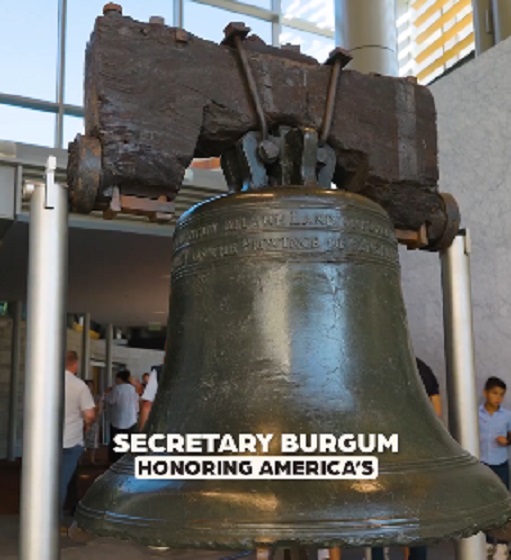
Foreign visitors heading to America’s crown-jewel national parks will soon face a steeper bill, as the Trump administration moves to prioritize U.S. taxpayers who already bankroll the system. The Department of the Interior announced Tuesday that starting in 2026, non-residents will be charged an additional $100 at 11 of the country’s busiest parks — a list that includes the Grand Canyon, Yellowstone, Yosemite, Acadia, Everglades, and other iconic destinations. The change accompanies a sharp increase in the cost of an annual all-parks pass for foreign tourists, which will jump to $250, more than triple the current rate. Americans and permanent residents will continue paying $80.
Interior Secretary Doug Burgum framed the policy as a straightforward matter of fairness. “President Trump’s leadership always puts American families first,” he said, arguing that U.S. households already subsidize the National Park System and deserve affordable access while international tourists contribute “their fair share” to the upkeep and expansion of the park network. It’s a pitch that aligns with Trump’s broader push to restore what he calls a sense of ownership and pride in the country’s natural treasures, and to make sure the burden of maintaining them doesn’t fall solely on American families.
We’re making it easier & more affordable for Americans to experience the beauty & freedom of our public lands!
In 2026, we’re launching:
– America-first pricing 💵
– Digital passes 📱
– Patriotic pass designs 🇺🇸
– Expanded motorcycle access 🏍️
– 5 additional fee-free days 🗓️ pic.twitter.com/a2SvHNBdSP— Secretary Doug Burgum (@SecretaryBurgum) November 25, 2025
The National Park Service recorded nearly 332 million visits in 2024 across its 63 designated national parks — a staggering figure that has placed heavy pressure on trails, facilities, and staff. While some parks charge per-vehicle fees and others by the individual, the $80 “America the Beautiful” pass covers the holder and all passengers or up to four adults. Under the new rules, foreign visitors who purchase the $250 annual pass will avoid the extra $100 at the 11 high-traffic parks, but all other overseas travelers will pay the surcharge at the gate.
The administration says the approach follows a July executive order from President Trump, aimed at preserving parkland “for American families” by ensuring those who don’t support the system through taxes help shoulder the cost of its growing maintenance needs. Burgum’s department also highlighted that U.S. visitors will continue to enjoy “patriotic fee-free days” tied to national observances — including President’s Day, Veterans Day, and Flag Day, which coincides with Trump’s birthday — while foreign visitors will pay full freight.
The move is expected to generate significant revenue from international tourism while reinforcing a message that has become central to Trump’s agenda: America’s natural wonders belong first to the taxpayers who fund them, and protecting access for those families comes before subsidizing the travel of visitors from abroad.
International
Boris Johnson Urges Ukraine to Continue War
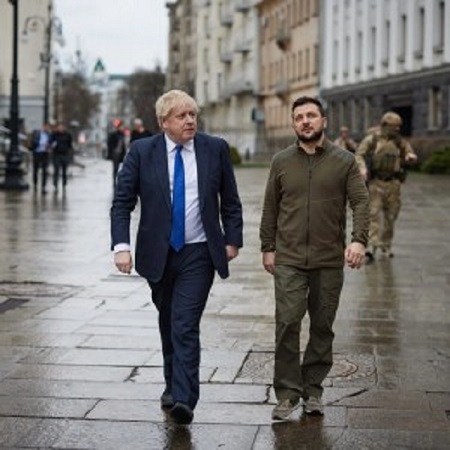
By Martin Armstrong
Trump’s proposal for peace in Ukraine has been met with an overwhelming condemnation from the world’s neocons. Former UK Prime Minister Boris Johnson reemerges from the shadows whenever he hears word that a war may be winding down. He played an instrumental role in persuading Zelensky not to negotiate a peace treaty with Russia when it was apparent that Ukraine could not easily win, and now, Johnson is urging Ukraine to continue the war.
“Imagine that you are Vladimir V. Putin and you are spending a calm Saturday in the Kremlin… You casually watch the television news, and you cannot help but smile at the incompetence of your opponents, at the astonishing weakness of the West. You have lost more than a million soldiers, killed and wounded, in your attempts to subdue Ukraine. You have still failed to capture more than 20 percent of the country’s territory. Your economy is faltering. And now they are talking about some new 28-point plan to end the war – and it could have been written entirely by the Kremlin,” Johnson warned.
In typical neocon fashion, Johnson wants to paint the proposal as a victory for Russia. He acknowledges millions have died, but since they are Russian, their lives do not matter. Continue the slaughter at the expense of the people.
Johnson declared that Britain was in a proxy war with Russia back in November 2024. “It has been pathetic… Let’s face it: We’re waging a proxy war but not giving our proxies the ability to do the job. For years now, we’ve been allowing them to fight with one hand tied behind their backs, and it has been cruel,” he admitted one year ago. Why would Britain feel threatened by Russia? Why would any sane leader thrust their people into a battle that is not theirs to fight?
The head of M16, Sir Richard Moore, also came out in November 2024, admitting British intelligence was discreetly fighting on behalf of Ukraine. “We cherish our heritage of covert action, which we keep alive today in helping Ukraine resist the Russian invasion,” Moore commented.
Moore and Johnson know that Russia has no incentive to invade Europe, especially Britian. There is absolutely nothing for Putin to gain. Europe, on the other hand, has everything to gain through conflict with Russia. They see Ukraine as the ultimate entryway into Russia
War is a great way to default on debts. You get to form a new government, and they always disavow the debts of the previous government. Europe has been committing economic suicide. Between the COVID-19 Lockdowns, the NET-ZERO Climate Change, and then the sanctions on Russia that doubled their fuel costs, you could not ask for a more brain-dead group of politicians who have ZERO comprehension of even how the economy functions.
Plain and simple—Russia invaded due to the West’s failure to honor the Minsk Agreement. The neocons disregard the proposal entirely and conveniently disregard the original signed agreement when discussing conceding territory.
“The document offers Ukrainians not only to give up any attempts to reclaim Crimea or Donbas, but also to cede vast territories, including about 250,000 Ukrainians whom the Russians do not even control. Of course, you knew your negotiators would try something like that. But you never believed anyone would take this seriously. You can’t believe that President Trump would back this plan, because it is a complete betrayal of Ukraine,” Johnson continued in his recent writing.
LET THE PEOPLE VOTE! The ethnically Russian people living in Ukraine have been unable to decide on their leadership. Zelensky outlawed their religion and language. Everyone believes they are protecting the people in these regions from the other side, but only one side is open to learning the people’s wishes. The 28-point plan saves the PEOPLE of both Russia and Ukraine. Russia cannot abandon the war without guarantees that NATO will back down and Ukraine is merely an EU puppet. Zelensky now has two days to decide whether he is willing to destroy his nation for the neocons.
-

 Alberta2 days ago
Alberta2 days agoPremier Smith explains how private clinics will be introduced in Alberta
-

 Business2 days ago
Business2 days agoUS Supreme Court may end ‘emergency’ tariffs, but that won’t stop the President
-
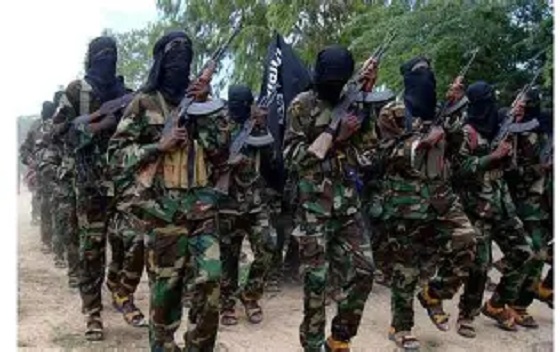
 International2 days ago
International2 days ago“The Largest Funder of Al-Shabaab Is the Minnesota Taxpayer”
-

 Alberta2 days ago
Alberta2 days agoAlberta introducing dual practice health care model to increase options and shorten wait times while promising protection for publicly funded services
-
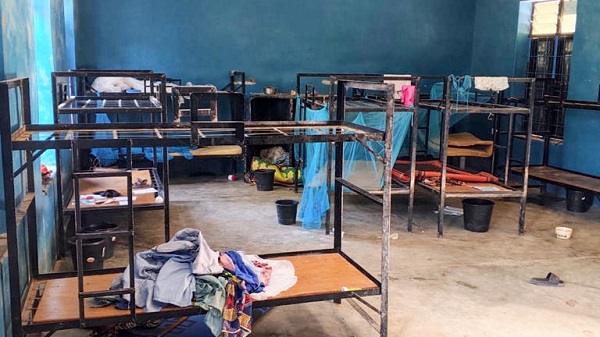
 International2 days ago
International2 days ago50 of the 315 students and 12 staff abducted from Catholic school in Nigeria last week have escaped
-
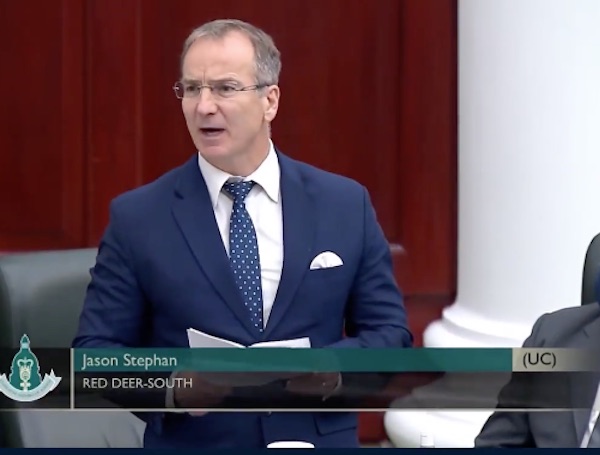
 Alberta2 days ago
Alberta2 days agoRed Deer’s Jason Stephan calls for citizen-led referendum on late-term abortion ban in Alberta
-
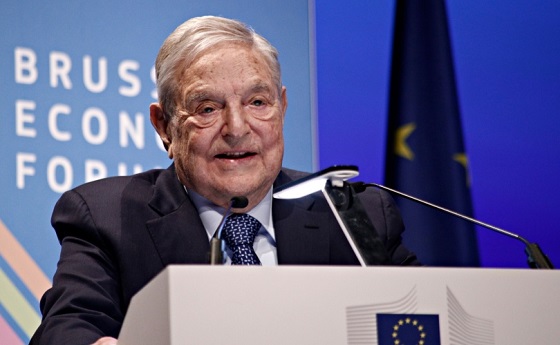
 espionage2 days ago
espionage2 days agoSoros family has been working with State Department for 50 years, WikiLeaks shows
-
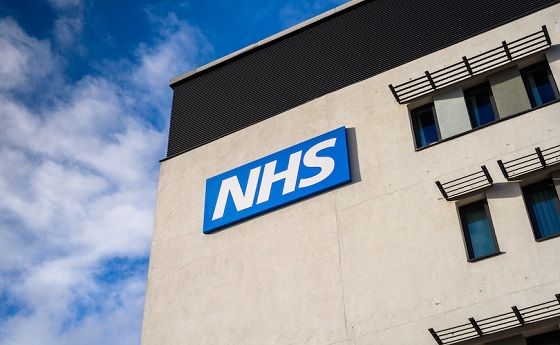
 Health2 days ago
Health2 days agoMore than 200 children will receive dangerous puberty blockers for new UK study








